
Osteochondrosis is a degenerative-dystrophic intervertebral disc lesion, and the cervical spine is the most vulnerable part of the spinal space, having a distinct anatomical structure from the very close proximal vertebrae and a weak muscular corset. Therefore, even with a small additional load on the neck, vertebral displacement can occur, resulting in compression of blood vessels and nerves.
And because the vertebral arteries involved in the blood supply to the brain pass through holes in the transverse process of the vertebrae in this part, pinching the vertebrae in this part or pressing the holes by overgrown osteophytes is fraught with very serious consequences.
What is this?
Osteochondrosis of the cervical spine is a progressive polyetiological disease, indicated by degeneration of the intervertebral disc and dystrophy of the spinal ligament apparatus.
The cause of its occurrence
The main causes and prerequisites for the occurrence of cervical vertebral osteochondrosis are:
- Curvature of the spine, scoliosis.
- Stress, nervous tension negatively affects the general condition of the body, can cause cervical osteochondrosis.
- Delayed infectious diseases are often the cause.
- Improper and uncomfortable body position during sleep (e. g. , uncomfortable pillows).
- Congenital problems or the presence of hereditary diseases of the cervical spine.
- Poor posture in young years and adolescence.
- Overweight, obesity of various degrees. The extra pound increases the load on the vertebrae and discs, which leads to a degenerative process.
- Back injuries that may occur during childhood or adolescence.
- Disorders of metabolic processes.
- Occupations associated with physical labor, which can provoke diseases of the spine in various parts.
- Inactive lifestyle, inactive work, improper exercise performance.
For the successful treatment of cervical osteochondrosis, it is first necessary to determine the cause of its occurrence, the prerequisites that provoke its development and eliminate it. Until recently, the disease only occurred in people over 45 years of age. Now young people are exposed to it, the age range is 18-25 years.
Characteristics of the cervical spine
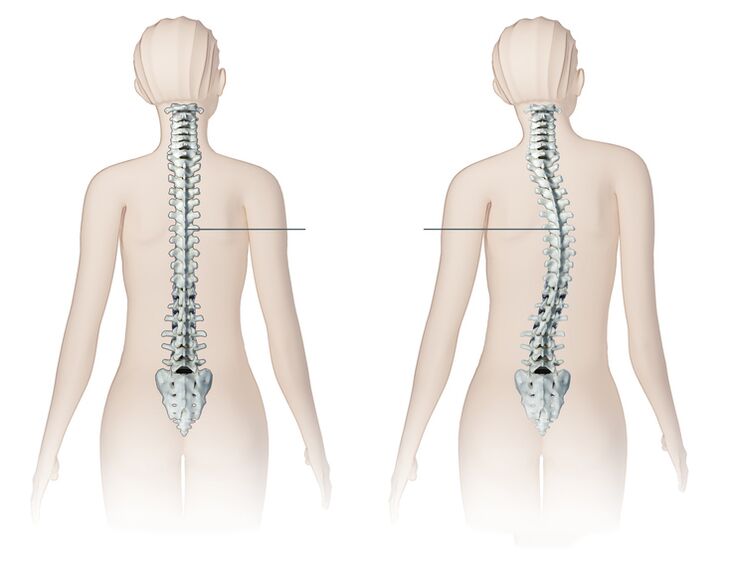
Consider how the cervical region differs from the rest of the spine, and that in the process of developing osteochondrosis is a prerequisite for the development of this syndrome.
- In the cervical region, there are important ganglia (nodes) of the autonomic nervous system.
- In the transverse process of the vertebrae there are holes that form channels through which the vertebral arteries pass, which supply oxygen and nutrients to the brain, cerebellum, auditory organs, and even the vertebral nerves. This is a prerequisite for frequent arterial and nerve clips.
- The cervical spine is the easiest to move. He is characterized by all kinds of movements completely. This is a prerequisite for frequent violations and sublocations!
- The intervertebral foramen of the three lower vertebrae are not round, but triangular. This is a prerequisite for the violation of nerve roots by bone growth, which is formed in osteochondrosis.
- The intervertebral disc is not located between the vertebral bodies throughout its entirety. On the front, instead of on their sides, there are protruding edges of the vertebrae, which are interconnected by joints.
Here are the main features that we will develop, analyzing the symptoms and complications of osteochondrosis.
Stage of development
The degree of osteochondrosis is determined by the clinical picture and complaints of the patient. The concept of degree should not be confused with the degree of osteochondrosis. The levels will be discussed below.
- First degree. clinical manifestations are minimal, the patient may complain of low -intensity pain in the cervical spine, it may worsen when turning the head. Physical examination may show slight tension in the neck muscles.
- Second degree. the patient is concerned about pain in the cervical spine, the intensity is much greater, the pain may radiate to the shoulders, up to the arms. The painful sensation increases when tilting and turning the head. Patients may notice decreased performance, weakness, headaches.
- Third degree. symptoms of cervical osteochondrosis increase, the pain becomes persistent with irradiation to the arm or shoulder. Numbness or weakness appears in the muscles of the arm, when a herniated disc forms (see symptoms of lumbar spine hernia). Examination showed limited movement of the cervical spine, pain on palpation of the cervical spine.
- Fourth grade. there is complete destruction of the intervertebral disc and its replacement with connective tissue. Dizziness increased, tinnitus appeared, coordination disorders.
Symptoms
The severity of the symptoms of cervical osteochondrosis depends on the degree of destruction of the vertebral structure. Symptoms are exacerbated by the growth of bone tissue with the formation of osteophytes, radicular syndrome (radicular pain when nerves are pinched), intervertebral hernia (protrusion of a disc into the spinal canal).
The first signs of the disease are periodic headaches in the occiput, pain in the neck, itching and clicking in the vertebrae when turning the head, and sometimes a tingling sensation in the shoulders. Over time, symptoms increase, and pain intensity increases.
Pain syndrome is the main manifestation of osteochondrosis. Pain in the neck can be dull, persistent or sharp with the lumbago under the occiput when turning the head. The entire cervical area or the altered vertebral projection area, as well as the clavicle, shoulder, scapula, and heart area, may be sore. Restriction of head movement due to pain often occurs in the morning after sleeping in an uncomfortable state.
The disease causes compression of the peripheral nerve roots (radicular syndrome) and causes pain along these nerves. May be numbness in the hands or fingers, disturbance of sensitivity in certain areas of skin protected by pinched nerves.
According to some characteristic symptoms, it can be assumed which vertebrae are affected:
- C1 - violation of sensitivity in the occipital area;
- C2 - pain in the occipital and parietal regions;
- C3 - decreased sensitivity and pain in the half of the neck where the spinal cord is violated, the possibility of impaired sensitivity of the tongue, speech disorders due to loss of control of the tongue;
- C4 - disturbances of sensitivity and pain in the shoulder -scapular area, decreased tone of the muscles of the head and neck, possible respiratory disorders, pain in the liver and heart;
- C5 - decreased pain and sensitivity on the outer surface of the shoulder;
- C6 - pain extending from neck to scapula, forearm, outer surface of shoulder, radial surface of forearm to thumb;
- C7 - pain spreads from neck to scapula, back of shoulder, forearm to fingers II - IV, disturbance of sensitivity in this area.
- C8 - pain and sensory disturbances spread from neck to shoulders, forearms to little fingers.
Clicks or fractures during neck movements almost always accompany cervical osteochondrosis, which is observed in every patient. Cramps appear during a sharp rotation of the head or throwing it back.
Syndrome due to cervical osteochondrosis
The symptoms of cervical osteochondrosis are grouped together, which is called the syndrome. Their presence and severity may indicate pathology of the cervical spine with a defined localization.
A group of common syndromes:
- Vegetative-distonic syndrome. Subluxation of the first vertebra of the cervical spine with displacement can lead to the development of vegetative-vascular dystonia. VSD is not a definitive diagnosis, as it has no obvious symptoms. There may be neurological signs, symptoms of impaired cerebral blood flow, surges in intracranial pressure, muscle spasms. As a result, patient complaints are reduced to dizziness, decreased visual acuity, loss of consciousness, headache, and nausea.
- Irritating and reflexive. Burning and sharp pain in the back of the head and neck, sometimes with return to the chest and shoulders, arises at the time of the change of position of the head and neck, with sharp sneezing and head turns.
- Radicular. If not called cervical radiculitis, it combines symptoms associated with violation of the nerve roots of the cervical vertebrae. Characterized by "chills" in the affected area, tingling in the fingers, forearms, dry skin, spreading to certain fingers.
- HeartAlmost the same picture with angina pectoris often leads to misdiagnosis and treatment. This syndrome appears due to irritation of phrenic nerve receptors, partially capturing the major muscles of the pericardium and pectoralis. Therefore, spasms in the heart area are more reflex, as is the response to cervical nerve irritation.
- Vertebral artery syndrome. It develops directly both with compression of the artery itself, and with irritation of the sympathetic nerve plexus, which is located around it. Pain in this pathology is burning or throbbing in the occipital region by spreading to the temples, superciliary arch, crown. Occurs on one and on both sides. Patients usually associate joy with the state after sleep in a non -physiological state, travel on the road, walking. With severe symptoms, hearing loss, dizziness, tinnitus, nausea, vomiting, loss of consciousness, increased blood pressure are possible.
The specificity and large number of various symptoms that accompany the disease complicate further diagnosis and treatment, as some of them may be completely different signs of the disease.
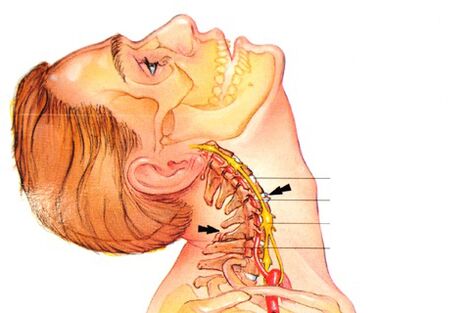
Diagnostics
As with any diagnosis in medicine, the diagnosis of osteochondrosis is set based on the patient’s complaints, medical history, clinical examination and additional research methods. Radiography of the cervical spine is performed in frontal and lateral projections, if necessary in a special position (with the mouth open). At the same time, experts are interested in the height of the intervertebral disc, the presence of osteophytes.
From modern research methods, NMR and CT studies are used, which allow the confirmation of the most accurate diagnosis. In addition to the additional research methods listed, you may need to consult with relevant specialists (cardiologists, ophthalmologists, neurosurgeons), and examination by a neurologist is very important. A neurologist is involved in the treatment of osteochondrosis, therefore, after examining the patient, he or she, at his or her discretion, will prescribe the minimum examination required.
How to treat osteochondrosis of the cervical spine?
Complex treatment of cervical osteochondrosis can include the following traditional and non-traditional methods: drug treatment, massage, acupressure, manual therapy, physiotherapy, acupuncture, homeopathy, folk remedies, etc.
The main treatment regimen for osteochondrosis is the same for all localizations of the disease:
- First you need to relieve the pain.
- Then the swelling will disappear.
- At this stage, it is necessary to normalize blood circulation.
- Strengthens the muscular corset.
- Improves nutrition and tissue regeneration.
The list of drugs and medications for the treatment of cervical osteochondrosis at home is very extensive:
- Anti-inflammatory (steroids). This is a hormonal medication that relieves inflammation and, thus, relieves pain. Often, for osteochondrosis of the cervical spine, tablets and ointments are used based on the substances hydrocortisone, prednisolone or dexamethasone;
- Analgesics (non -steroidal painkillers). They are usually prescribed as tablets or capsules. Keep in mind that most of these drugs irritate the lining of the gastrointestinal tract. Among the modern drugs used to relieve pain in osteochondrosis;
- Muscle relaxation is a drug that relaxes muscle tone. They are used in surgery and orthopedics as an aid to pain relief. These medications are given parenterally, and therefore always under the supervision of a physician. There is an extensive list of contraindications;
- Chondroprotectors are preparations that contain substances that replace cartilage components - chondroitin, hyaluronic acid. To achieve a lasting positive effect, such a drug must be taken over a long period of time;
- Ointments and gels for external use. This is the easiest group of medications to use at home. They are divided into inflammation relief, warming and pain relief. Such funds are often advertised. With cervical osteochondrosis, not all ointments are effective, moreover, due to their availability, sometimes they are used inadvertently and without taking into account the uniqueness of the pathogenesis.
- Vitamins. With osteochondrosis, vitamins are prescribed, which have a beneficial effect on the peripheral nervous system and increase conductivity. Water -soluble vitamins: B1, B6, B12, fat -soluble vitamins: A, C, D, E. In recent years, it has become more common to prescribe combined preparations containing painkillers and vitamin components. An effective preparation consists of B vitamins based on pyridoxine and thiamine, as well as anesthetics.
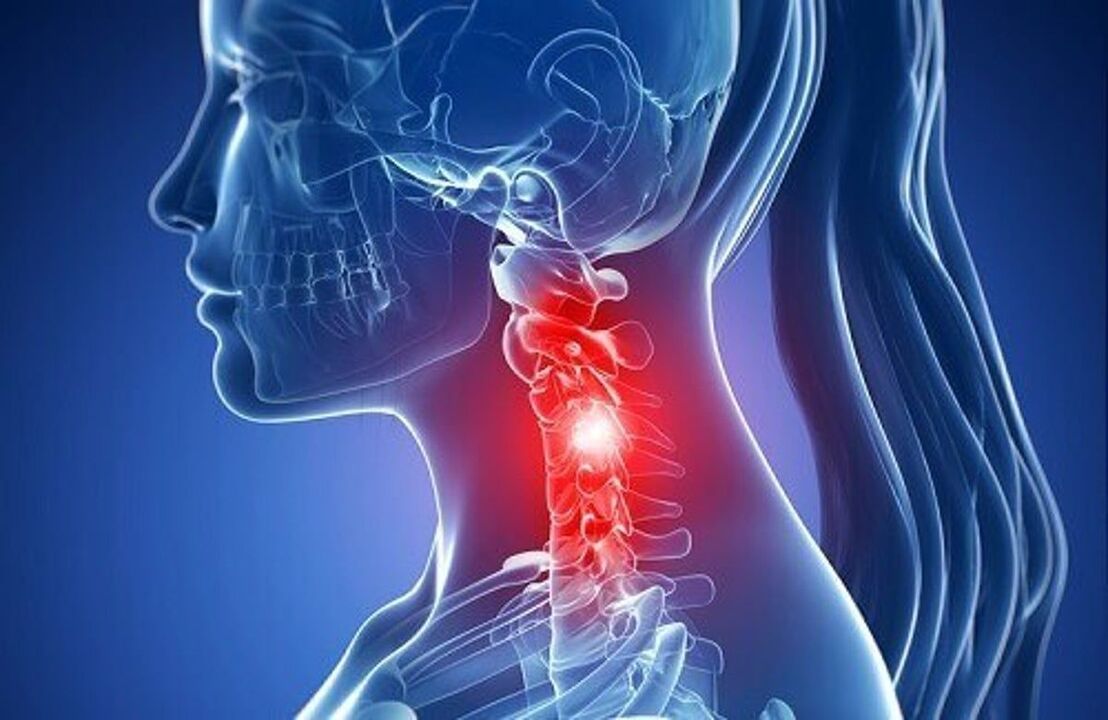
Only a team of specialists can select the most appropriate therapy, which includes neurologists, physiotherapists, massage therapists, surgeons, and vertebral neurologists.
Physiotherapy
Exercise therapy for cervical osteochondrosis should be performed outside of acute exacerbations. The greatest efficiency of this technique is during the recovery period. There should be no discomfort and pain during complex execution!
- Exercise # 1 Lie on your stomach, place your hands on the floor, lift your head and torso, your back should be straight. Remain in this position for 1-2 minutes. Slowly lower yourself to the floor. Repeat 2-3 times.
- Exercise number 2 Lie on your stomach, stretch your arms across your body, turn your head to the left, try to touch the floor with your ears, then turn your head to the right. Repeat 6-7 times in each direction.
- Exercise number 3 In a sitting position, while inhaling, bend forward, and try to touch the chest with your head, then exhale, bend back and tilt the head back. Repeat 10-15 times.
- Exercise # 4 Sit down placing your palms on your forehead, apply pressure with the palms on your forehead, and your forehead on the palms of your hands. Continue this exercise for 30 seconds. Repeat 2-3 times.
- Exercise number 5 Slowly turn your head first in one direction, then in the other. 10 rotations in each direction. Notice the dizziness. When it appears, training stops.
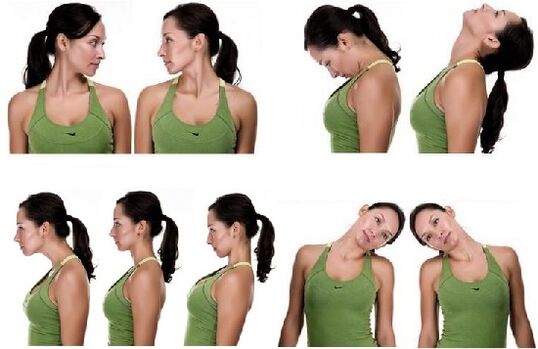
Massotherapy
Massage can be done at home, but with extreme care so as not to aggravate and endanger the patient. The patient should assume a lying position, place the forehead in the hands and stretch the chin towards the chest. In this case, the neck muscles must be completely relaxed.
- Caressing. It is necessary to begin the massage with this movement: caressing the collar zone in the direction from the lymph to the supraclavicular and axillary nodes. Then a flat sweep and a brushed brush.
- Push-ups. To do push-ups, the masseur places his hands on the neck (forefinger and thumb should be together) and moves down the spine. Push-ups can also be done with the edges of the palms up to the shoulder joints.
- Triturasi. Rubbing is done to warm the muscle, relax it, and increase blood flow to the area. The massage should start from the base of the skull, doing circular and straight movements with your fingers. You can also do sawing movements with the palms parallel to the ribs.
- Knead. Kneading should be done on the neck with a circular motion.
- Vibration. The sequence ends with blows and vibrations, which are done with the help of concussions and beatings.

Massage is needed to strengthen muscle tone and relieve pain. Depending on the stage at which the osteochondrosis, a massage technique is selected. Even so, when doing a neck massage, experts use all the classic massage techniques: rubbing, caressing, kneading, etc. In cases where the patient experiences pain in the neck area only on one side, the massage begins in the healthy part of the neck, gradually moving to the part of the collar zone where a strong painful sensation arises.
Manual therapy
Manual therapy helps to overcome acute and chronic pain, it also increases the range of motion and improves body posture well. The main methods of manual therapy for osteochondrosis of the cervical spine:
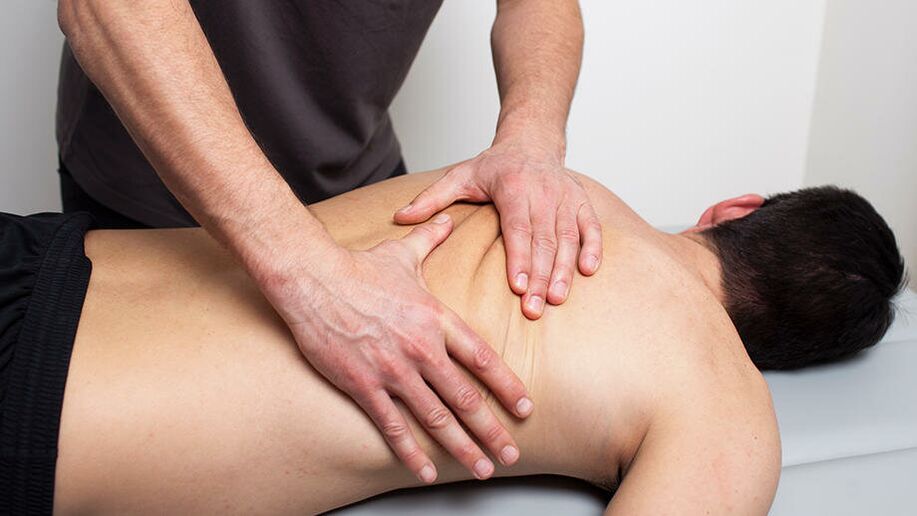
- Soothing sequences and segments. It is used to warm up muscles and relieve tension.
- Mobilization. Effects aimed at restoring joint function. by the stretching method.
- Manipulation. Sharp pressure directed at the pathological area of the patient. This procedure is accompanied by a special feature (return of the joint to a normal position).
Specialists who perform manual therapy should be fluent in this technique. Otherwise, any offense may result in injury.
Orthopedic pillows
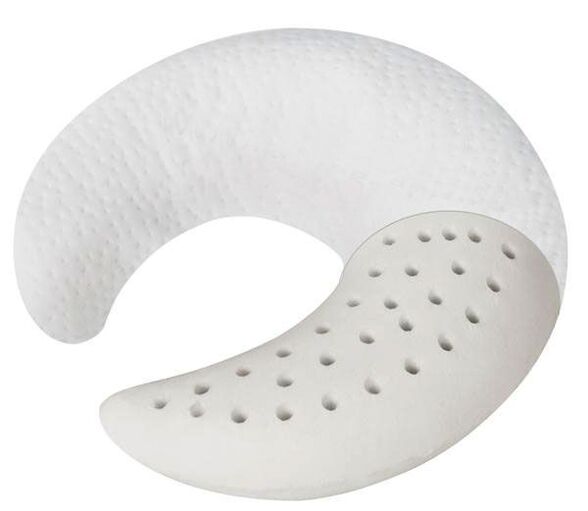
Orthopedic sleeping pillows are an effective preventative measure. In many cases, osteochondrosis is exacerbated by additional stress on the cervical arteries and nerve roots while sleeping on an uncomfortable pillow. Orthopedic products ensure a uniform horizontal position for a person during sleep and, thus, guarantee a physiologically adequate blood supply to the brain.
When choosing a pillow, one should take into account one’s anatomical features and relate them to the volume and characteristics of the filler. Properly selected pillows bring significant benefits for patients with osteochondrosis of the cervical spine.
Physiotherapy
Physiotherapy procedures for cervical osteochondrosis:
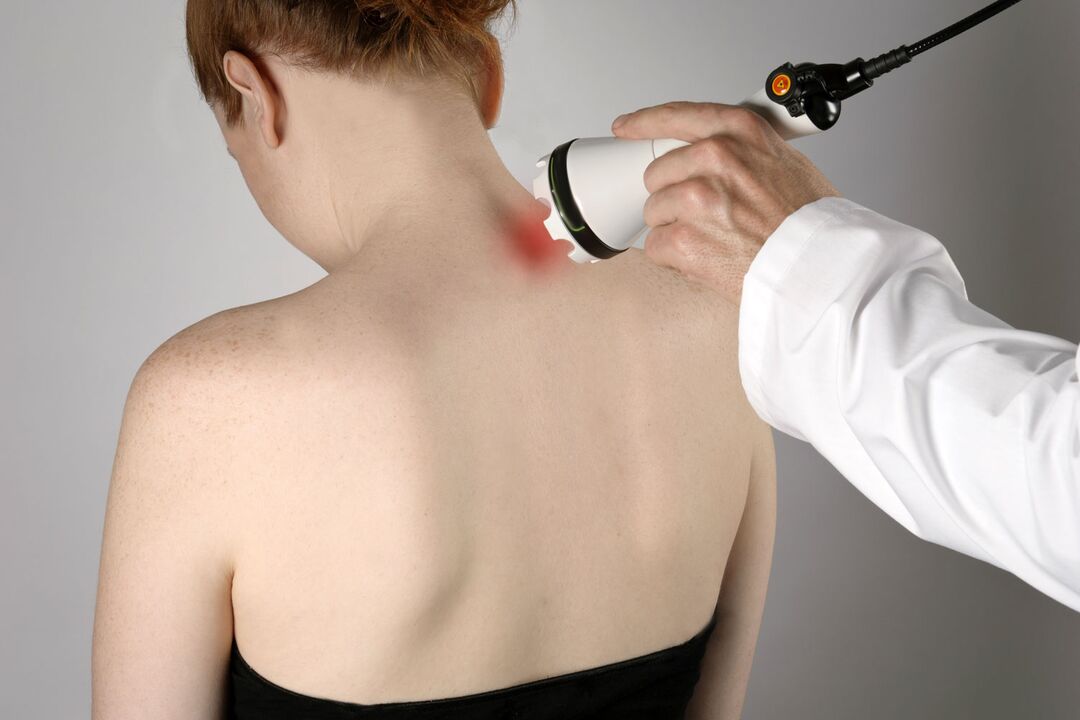
- Electrophoresis. It is best used with painkillers (anesthetics), which are injected under the skin via electronic pulses
- Ultrasound. This has a beneficial effect on metabolic processes in the tissues of the cervical spine, because the swelling is removed, the pain disappears.
- Magnetotherapy. A safe method of treatment, which consists of exposing damaged cells to a low -frequency magnetic field. It provides an analgesic effect, acts as an anti-inflammatory agent
- Laser therapy. Improves blood circulation in the affected area, relieves tissue swelling, pain.
Physiotherapy procedures have a beneficial effect on the discs and vertebrae in cervical osteochondrosis. In combination with medication intake, combination treatment helps relieve the symptoms of the disease. The procedure is performed in a hospital or a specialized office in a polyclinic. Before starting the course, you must consult a doctor, determine the duration of physiotherapy, its type. It is strictly forbidden to spread it during exacerbations.
Kolar Shants
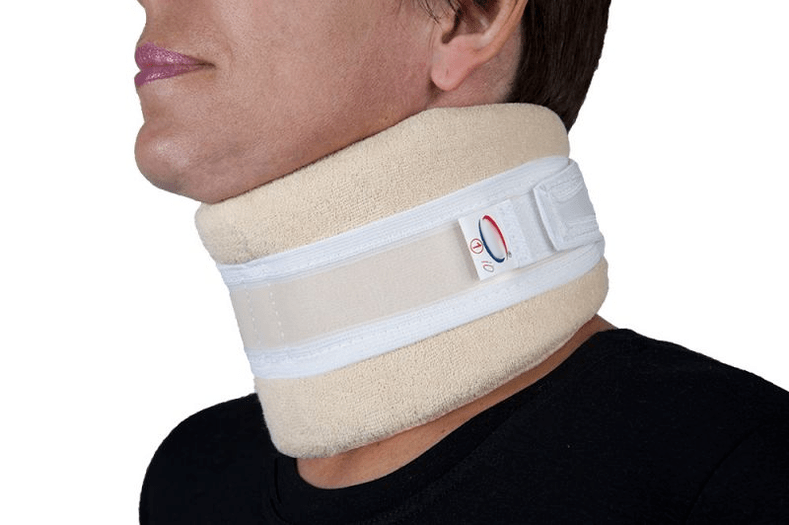
Shants collar is a soft and comfortable device that fastens with Velcro at the back and is used for cervical osteochondrosis. But not for treatment, but for temporary rest and relief of fatigue. It should not be worn without removing it, otherwise the neck muscles will stop functioning and immediately atrophy. If the Shants collar is chosen correctly, the patient feels comfortable and protected.
Collars are selected strictly according to the measurements at the pharmacy or orthopedic store. Better in the store, because the people who work there, as a rule, know their business and product features quite well, which means they can help in each particular case.
Folk remedies
If the pain due to osteochondrosis of the spine becomes unbearable and common, then you will agree to stop it, and here the traditional complex treatment will be successfully supplemented with alternative methods.
- insist celery root (5 grams per 1 liter of boiling water) for 4 hours, drinking one tablespoon before each meal;
- compress honey, of which we take 2 tsp. honey and 1 mummy tablet. We heat the components in a water bath, spread them on a cloth and apply to the cervical area, i. e. the neck, at night;
- in case of acute illness, growing carrots in the country helps me. I just wash the leaves, pour with boiling water, cool a little, apply to the neck and wrap with a thin scarf for the night - in the morning you can already live and work;
- we insist chamomile flowers in vegetable oil for two days, heat to boiling (for 500 ml of oil, needed 30 grams of the plant), rub into the sore area;
- honey-potato compresses also help, for this, the root crop must be grated and mixed with honey in equal amounts, applied to the large neck at night, applied periodically, at least once a week.
Prophylaxis
As always, proper prophylaxis will help prevent osteochondrosis of the cervical spine, but, of course, all physical exercises must be used regularly, otherwise there will not be much benefit from "periodic" exercise.
Remember the simple rule:
- eat more foods with lots of calcium and magnesium. These are fish, peas, nuts, beans, cheese, herbs, but it is better to refrain from sugar, flour, smoke, spicy foods.
- regular exercise for sports, especially swimming, water aerobics, gymnastics for stretching and flexibility of the vertebrae are also suitable for the prevention of osteochondrosis, which can be done at home.
- during inactive work, at least several times a day, do a special set of exercises, for example found in the video.
- choose a good orthopedic mattress and a pillow that is suitable for the neck, supporting the head in a dream in the correct anatomical position (yes, your favorite bottom pillow will not go away with problems with the spine! ).
If you already have such a diagnosis, the patient should save his spine, namely:
- Be careful with lifting and carrying loads, it is better to go to the store twice than to pull a heavy bag in both hands, strongly tying your neck and shoulders;
- Don’t get too cold, avoid currents and cold airflow from the air conditioner (some people like to cool off on a hot day, standing with your back to the fan);
- While bending the body forward - remember about osteochondrosis;
- Avoid overheating of the muscles, which can happen to those who like excessive hot showers;
- Don’t forget to break away from the monitor periodically, change body position, don’t sit for hours, or even days;
- Rest your neck, for which you should buy a Shants collar;
- If possible, if the condition of the cardiovascular system allows, a steam bath.
In conclusion, I would like to say that a child threatened with osteochondrosis (father and mother already have it) and an adult with this disease throughout his life are only obliged to take precautionary measures so as not to become deformed and not be on the operating table, because of surgerythis is quite difficult and requires long -term rehabilitation. Moreover, it is not always possible, because there are cases that can not be managed, so it is better to protect health from a young age, as long as the disc is intact and unnecessary growth does not squeeze the blood vessels.



















